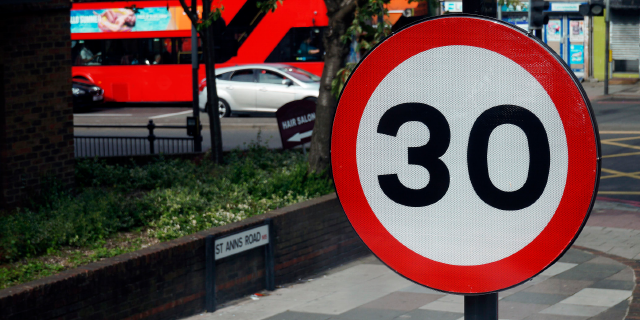Van speed limits explained
The Mustard.co.uk guide to van speed limits – how they’re different to car speed limits, and why you need to know about them
If you’re a van driver then it’s crucial you know about the speed limits on UK roads.
Speed limits for vans are particularly important if you drive a company vehicle, or if you drive a van for work and can’t afford points on your licence, a speeding fine or at worst, a driving ban.
This guide will explain exactly what the legal limits are for the kind of vehicle you’re driving.
Related: How to get the cheapest van insurance quotes
Are speed limits for vans different?
Yes – most work vans, particularly panel vans are subject to a lower speed limit than cars.
It’s especially important to know this because if a speeding matter is taken to court, the sentencing body will take the type of vehicle into account – and could impose harsher penalties on van drivers
As a basic rule of thumb, these are the speed limits for vans:
- Built-up areas (towns and cities): 30mph – the same as cars
- Single carriageways: 50mph – 10mph less than cars
- Dual carriageways: 60mph – 10mph less than cars
- Motorways: 70mph – the same as a car
Where a lower limit is imposed by signage, that applies to both cars and vans.
Related: Van insurance groups explained
Types of vans and their speed limits
Speed limits for large vans
Large vans with a 3.5-tonne (3,500kg) gross vehicle weight are subject to the lower restrictions.
Speed limits for small and medium vans
Medium-sized vans are subject to the lower limits.
The same goes for small vans, as long as they are purpose-built as vans.

Speed limits for car-derived vans
It’s not always obvious what classes as a car-derived van versus a small van. The law defines it as a goods vehicle which is adapted from a passenger car and has a maximum laden weight of less than 2.0 tonnes.
A good rule of thumb is that if it looks like a car with its rear windows blanked out, it’s a car-derived van. These don’t have to follow the van speed limits and can drive as fast as a normal car on any road. For greater clarity, look at the vehicle’s V5C registration form.
Speed limits for dual-purpose vehicles
The definition of these under law is murkier, and particularly for pickup trucks it can be confusing.
The law defines dual-purpose vehicles as those constructed for carrying both passengers and goods, with an unladen weight of less than 2,040kg.
Dual-purpose vehicles must also have four-wheel drive or a fixed roof, and at least one row of passenger seats behind the driver with both rear and side windows.
These vehicles are not subject to the lower limits and can be driven as fast as a car.
You can find the legal definitions for both car-derived vans and dual-purpose vehicles on the Gov.UK website.
Related: Van insurance by van type
Speed limits for pickup trucks
Most pickup trucks count as dual-purpose vehicles and can be driven as quickly as a car.
Those with an unladen weight of more than 2,040kg, though (which is the case for some high-spec models) are subject to the lower limits.
If you’re unsure, check with the vehicle’s manufacturer or look on the V5C.
Speed limits for double-cab vans
Most of these also qualify as dual-purpose vehicles. However their looks – often very close to those of a normal van – can lead to confusion and wrongly issued tickets.
If issued with a ticket you do not believe was valid, follow the appeals process as you would with any speeding ticket, and provided the vehicle’s V5C classifies it correctly as a dual-purpose vehicle you shouldn’t encounter any difficulty.
Speed limits for campervans
Factory-supported campervans, such as the Volkswagen California, are not subject to lower speed limits.
Other vehicles converted from panel vans must first have their status changed on the V5C, which the DVLA will only do under certain conditions.
If the V5C still lists your campervan as a panel van then we recommend sticking to lower speed limits.
Speed limits when towing
If you’re towing a trailer – regardless of whether you’re driving a car or a van – the limit is reduced to 60mph on dual carriageways and on motorways.
So, what’s the speed limit for my van?
Needless to say, all vehicles should obey any specific limits set out in areas – such as 20mph outside schools or restricted speed zones on the motorway.
Otherwise, the speed limit for vans needs to be appropriate to their category – here are the current limitations:
| Vehicle type | Built up areas (mph) | Single carriageways (mph) | Dual carriageways (mph) | Motorways (mph) |
| Cars, car derived vans (CDVs), dual-purpose vehicles, camper vans | 30 | 60 | 70 | 70 |
| Cars, car derived vans (CDVs), and dual-purpose vehicles, if towing trailers or caravans | 30 | 50 | 60 | 60 |
| All other vans weighing no more than 7.5 tonnes (laden) | 30 | 50 | 60 | 70 (60 if articulated or towing a trailer) |
Getting great value van insurance at mustard.co.uk










